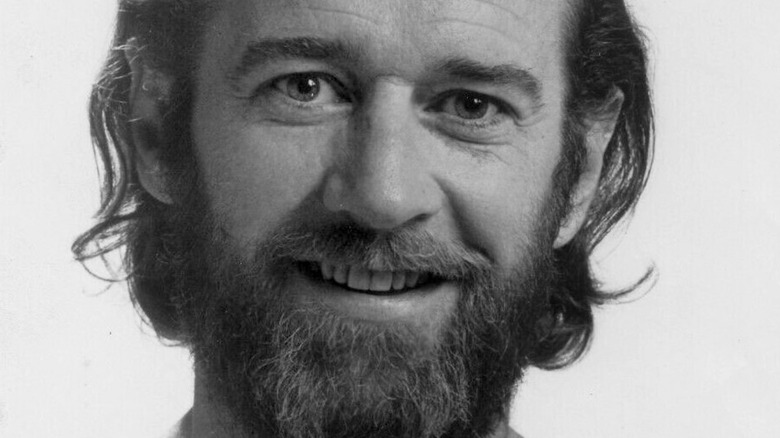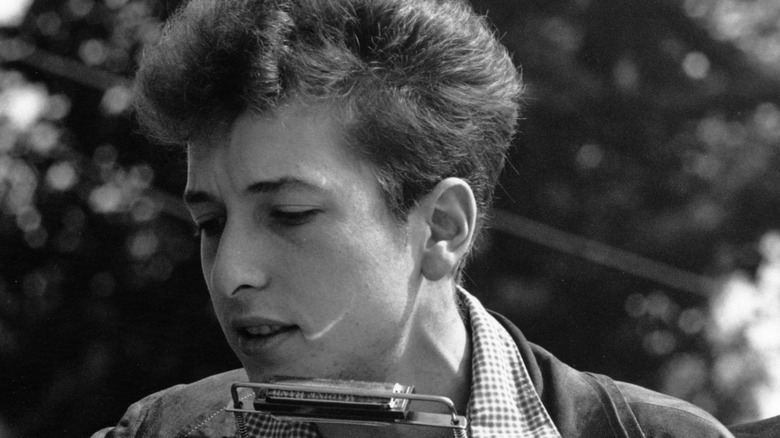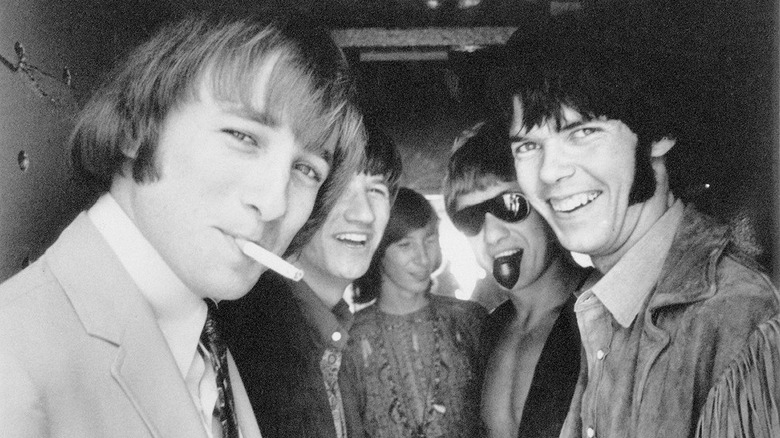George Carlin's Comedy Took A New Route Thanks To Two Folk Icons
Few comedians have made such a huge impact — and left behind such a huge void — as George Carlin. Part everyman philosopher, part burr in the side to the powers that be, and part dude you'd be fine having a beer with: Every comedian since Carlin owes a huge debt to his stripped-down, fearless, and conversational insight and wit. Carlin is a huge reason why modern-day comedians aren't just funny people who tell zippy one-liners but also social commentators, more trusted by some than politicians and religious leaders.
But to be clear: Carlin didn't just pop up on stage in his fully developed, final form, with his signature beard, long hair, and relaxed dress. As the George Carlin website tells us, the 1960s were Carlin's years of personal growth. He started in radio at KXOL in Forth Worth, Texas, before developing a comedy act with newsman Jack Burns and performing in mainstream nightclubs. After they split in 1962 to pursue solo careers, Carlin found his true self in the 1960's counterculture. Come 1967, during the Vietnam War, Carlin recalls thinking (via Far Out Magazine), "I was entertaining people in nightclubs who were 40 and were at war with their kids who were 20. There was a generational war. I was in the middle of it. I'm like, what the f*** am I doing over here?"
Carlin cited two legendary musical inspirations, in particular, for helping to grant him the insight that shaped his life and career: Bob Dylan and Buffalo Springfield.
The times they did change
When thinking of artists who embody "American folk music," few people rank higher on the list than Bob Dylan. Dylan was influenced by the same countercultural, antiwar, and civil rights movement era that influenced many artists of the 1960s. Dylan's second album, 1963's "The Freewheelin' Bob Dylan," saw Dylan speak up about U.S. foreign policy, institutional racism, and more, as Paste Magazine recounts. Dylan hit his social commentary high with 1964's "The Times They Are a-Changin'," which firmly established him as one of the preeminent voices of his time.
One person who Dylan greatly impacted? George Carlin. According to Far Out Magazine, Carlin said of the 1960s in general, "The hippies were growing into a force, and peace, love, flower power, pot-smoking, and anti-authority were ringing. Throw over the establishment, burn down the math building. Wow!" He continued, "So I gravitated toward that because I was that person really, and the people I hung around with were that way. The kids and the musicians I knew in the late '50s had gone through that transition; they looked different, and their music changed."
Carlin explains how musicians like Dylan weren't trying to "please people" but to express their true feelings and ideas. This might seem like a no-brainer to us now, but the insight was a revolutionary moment for Carlin, who early on very much followed a "mainstream dream" of "disc jockey, comedian, actor — big success" (via an interview with the Television Academy Foundation).
Singing songs and carrying signs
In an interview with the Television Academy Foundation, George Carlin talks about how the counterculture of the 1960s made it clear to him that his "traditional" early career dream had been a sham. He said that he'd always been a rebel who got "kicked out of three different schools, kicked out of the Air Force, kicked out of the choir, kicked out of the altar boys, kicked out of summer camp, kicked out of the Boy Scouts." So when the era of flower power took root, Carlin realized that he'd found his place.
Carlin cites another musician besides Bob Dylan when talking about influences that shaped him and his career: Buffalo Springfield. Anybody who's heard the opening notes to "For What It's Worth" will recognize how that one single track embodied many of the feelings of the time about war, government, paranoia striking deep, and so forth. Buffalo Springfield produced both impactful music in and of itself as well as an offshoot musician who went on to become a towering folk-rock-pop icon in the decades to come: Neil Young.
Carlin said that it took two years, from 1967 to 1969, for his personal change to come out in his material. And it happened on stage in public view. As Far Out Magazine quotes him, "I had denied that part of myself, and it came into full flower. I hadn't let myself grow, and later I found that I was more than just a comedian."


